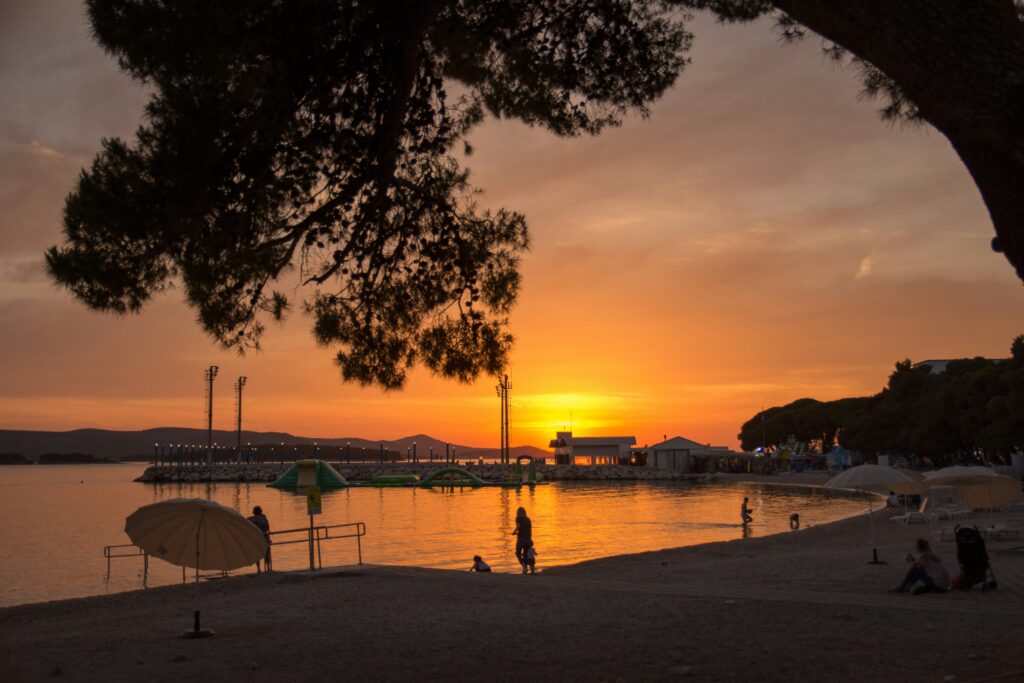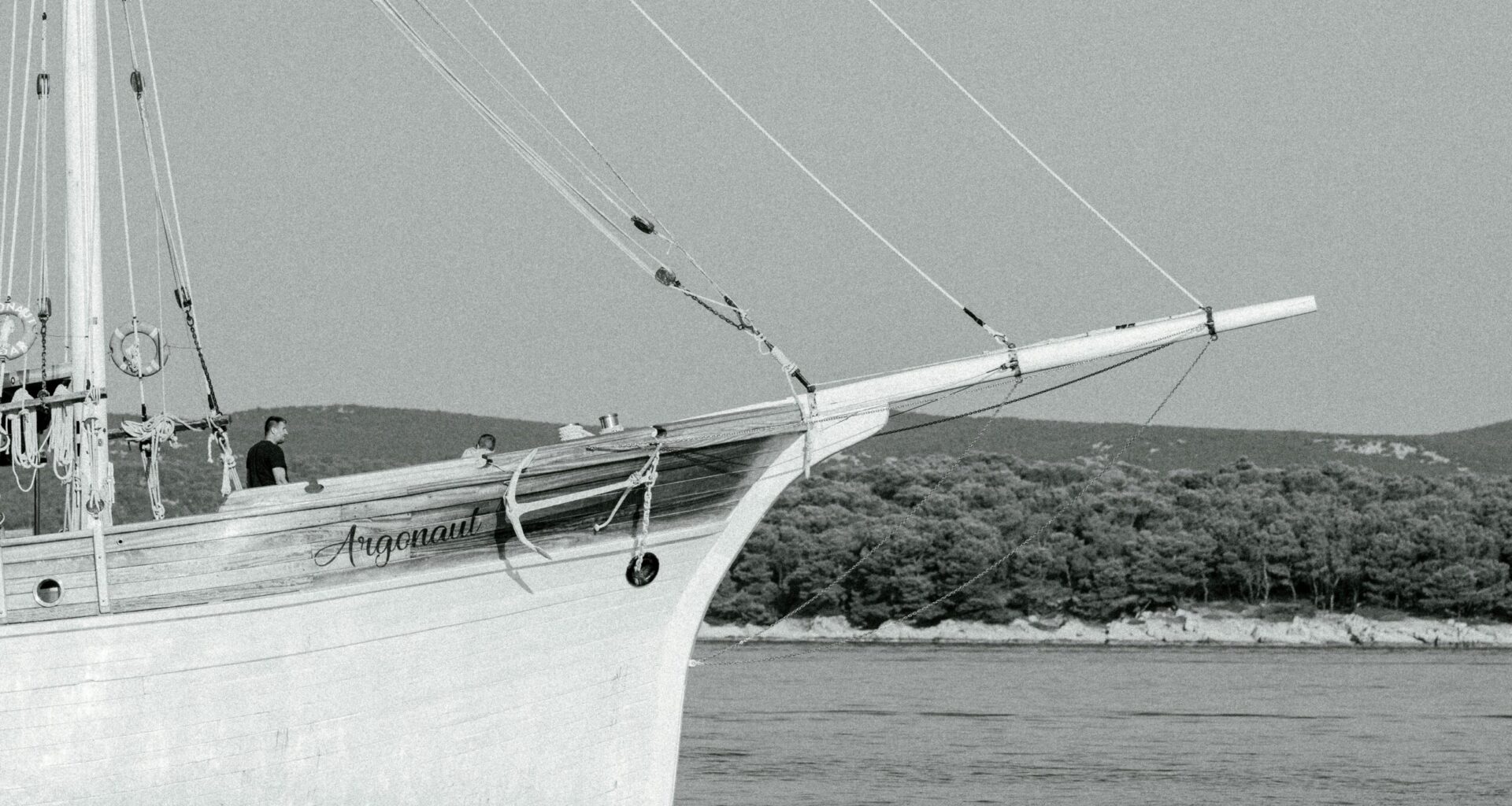November the 22nd, 2025 – Today, it has about 5,000 permanent inhabitants, but this little place near Zadar was once associated with royals. Biograd na Moru went from being the seat of Croatian kings to being the perfect location for a Dalmatian coastal break.
As Putni kofer writes, Biograd na Moru is very well known for being a truly picturesque tourist hub, a favourite summer destination packed full of beautiful bays, a crystalline sea and quaint promenades that are alive from morning to evening. It’s so much more than that, however. Behind this relaxed Dalmatian charm lies one of the most important stories of Croatian early medieval statehood. Rarely does a visitor who comes to swim, get a tan and eat some fresh fish ever realise that they’re setting foot in a city that was one of the key seats of the Croatian kings and a place of exceptional political power.
turning the clock back to the 11th century…

Among all the former Croatian royal cities, Biograd na Moru often remains tucked away in the background, although it doesn’t deserve to live in the shadow of anywhere else. At first glance, it may not seem imposing, because you aren’t going to stumble upon huge, ancient fortresses that dominate the skyline, nor will you run into luxurious palaces that would immediately reveal former power. There are no monumental mausoleums or large royal monuments that many European capitals are proud of to be found anywhere in Biograd na Moru. It is precisely in this modesty that part of its genuine uniqueness is hidden.
Biograd na Moru was the seat of Croatian kings, taking on an enormously important role and being much more than a holiday destination. Back during the 11th century, it represented one of the most important political, administrative and ecclesiastical centres of the entire Croatian state as it was back then. Its name is mentioned in connection with key moments of Croatia’s very early history, and the way life was once lived here was far more dynamic and influential than today’s peaceful, sunny and yacht-lined scenes might suggest.
Biograd was first mentioned in the mid-10th century as a fortified settlement on the coast, but its rise began somewhat later, when the Croats created a strong and internationally recognized kingdom. At that time, the city developed into an episcopal center and a place where some of the Croatian rulers resided. It was called a royal city and was one of the main political strongholds on the Adriatic. Its location between Zadar, Nin and Knin, important princely and royal centers of the time, gave it a strategic role that few recognize today.
was a croatian-hungarian king crowned there?

Some historical sources state that it was exactly in Biograd na Moru, way back in 1102, that the Croatian-Hungarian king Koloman was crowned as the ruler of Croatia and Dalmatia, which further confirms the status of this beautiful place back at that time. Although it was completely destroyed in a Venetian attack in 1125, its importance throughout the early Middle Ages has remained permanently recorded in the chronicles.
The Biograd diocese was one of the first, if not the first Croatian diocese. The most important documents are related to Petar Krešimir IV and his stay in Biograd during the second half of the 11th century, which is considered this area’s golden age. Biograd continued to develop strongly until its destruction during the wars with the Venetian Empire which raged during the first half of the 12th century.
biograd na moru was the seat of croatian kings, but it lives in the shadow of nin, knin and more…

Biograd was often in the shadow of other historical Croatian cities such as Knin, Nin, Solin or Šibenik. Although according to all indicators, Biograd was the only true capital, or the true sea of the Croatian kings. As a result of historical destruction and endless emigration, by the second half of the 19th century, this little part of Dalmatia was reduced to a small, holiday-oriented place without significant monuments that would clearly testify to its royal past.
there are no fortresses and palaces, but ancient traces remain…

If you’re planning a trip to this beautiful part of Dalmatia, be sure to visit the Local History Museum, located on the waterfront. Much more is revealed there about local history and its maritime traditions, and you’ll also see a unique collection dedicated to a sunken Venetian ship from the 16th century, which was carrying more than 10,000 fascinating objects.
And the aforementioned waterfront is the real lifeblood of Biograd na Moru, especially in the heat of the summer. Cafes, bars and restaurants are bustling with life, and the ships and yachts moored in Biograd’s two marinas give this jewel of Zadar County a special Mediterranean flair. In the height of the summer tourist season, you’ll also be able to enjoy a rich outdoor cultural programme, where you can expect performances by the best traditional Dalmatian klapa groups, as well as theatre performances for all ages, which are usually performed outdoors in the open-air cinema.
Subscribe to our newsletter
the fields marked with * are required
